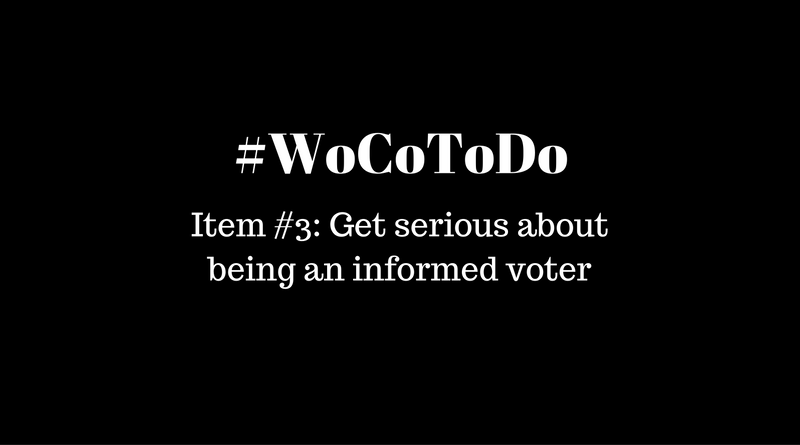By: Katie Sanders, Editor in Chief
Like many students on Wofford’s campus, Nov. 8 will be the first time I vote in a presidential election. I was pretty annoyed when I missed being old enough to vote in the 2012 election by ten days, so this time I am proudly casting my ballot. The only problem is, I have to pick someone to vote for. I have watched the presidential debates, but the only insight I gained from those was that Hillary Clinton hates Donald Trump and likewise Trump hates Clinton. The ridiculousness of this aside, I have to write someone’s name on the ballot in a week and I need to have a substantial reason for putting it there. So I did some research to see what the two major candidates really stand for outside of the context in which they relate to each other. Here’s what I came up with.
Clinton is all about making sure taxes are fair. She wants to make sure the wealthiest people in the country are paying just as much in taxes as middle and lower class families by getting rid of tax loopholes. She also wants to get rid of the tax loopholes that make it beneficial for companies to move overseas and encourage them to stay and create jobs in the U.S. Additionally, small businesses would get tax cuts to make it easier for them to thrive.
In her first 100 days, Clinton would work to make the largest investment in job creation since World War II. She has said several times that her proposed budget is balanced, so she does not plan on adding to the national debt. She wants to make college debt-free and relieve students who already have debt by letting them refinance. I can’t say I have anything to complain about there…
Something to think about: John Cochrane is an economist with a B.S. from Massachusetts Institute of Technology and a Ph.D. from the University of California at Berkeley. He writes a blog called “The Grumpy Economist” and he also wrote an op-ed for the Wall Street Journal published Aug. 11 criticizing Clinton’s economic plan. He thinks her plan is unrealistic due to the amount of detail she goes into with a lack of a timeline. He points to President Obama’s time in office to show that there’s only so much you can do in eight years, so you need to prioritize. I get the sense he would rather her focus more deeply on fewer issues than focus so superficially on a great number of things. In his blog titled “Clinton Plan” on Aug. 12, 2016, he says, “In sum, I think the picture I painted is unavoidable. Clinton and her team are well meaning, but this document (the website) displays an unbelievable naivete about how American government works. Every possible “policy solution” to every perceived problem in America got thrown in, with no thought of where the problems came from, no acknowledgement that good people have been trying hard for years and that American government has an important set of checks and balances and a policy process.”
Socially, Clinton is right in line with her liberal supporters. She wants to address LGBT rights and equality, racial justice, mental health awareness and the prevention of gun violence. She plans on defeating ISIS by ramping up the coalition air campaign, strengthening Arab and Kurdish forces already fighting on the ground and working to fix the unrest in Syria and Iraq that lead to the rise of the terror group in the first place.
Donald Trump. The man, the myth, the legend; the most perplexing candidate our country has seen in some time. Trump is all about growing the economy, consequently creating new jobs. He wants to cut taxes for every income bracket and allow low-income families to pay no taxes at all. Like Clinton, he focuses on fixing tax issues that negatively affect small businesses in addition to farmers. He also thinks the economy is too regulated, which costs the economy trillions of dollars and households thousands of dollars each year. “Needless, job-killing” regulations will be removed. He takes a strong stand on trade. He wants to renegotiate NAFTA and withdraw if the other members do not agree, as well as cutting off ties with China via tariffs and taxes.
Trump wants to see the U.S. become the world’s leader in energy production by eliminating Obama’s restrictions and advancing coal production, hydraulic fracturing and opening up more offshore energy resources. This will add billions to the GDP and 500,000 new jobs each year.
Something to think about: Ben White, writer for Politico, refers to Trump’s economic plan as “Frankenstein economics.” Overall, people see the plan as one that would make it’s targeted problems worse, not better, and that is a conglomeration of recycled policies of the past. In his article on Aug. 8, 2016, White quotes Douglas Holtz-Eaken of the American Action Forum: “This was a political creation not a policy creation and so in the end you have this weird stew of policies that is supposed to create a unique 21st century economy that would instead deliver us back to the economy of 1964.”
Socially, Trump will appoint a conservative judge to the Supreme Court, uphold citizens’ right to own firearms, enact programs to get gangs and drug dealers off the streets, fix the mental health system and, most notably, tighten up immigration security. He would like to build a stronger wall along the U.S. Mexico border, vet immigration applications to make sure potential new citizens uphold American values and temporarily suspend immigration from the Middle East.





























